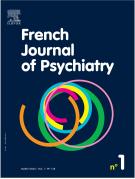Life expectancy, quality of life and schizophrenia - 29/05/20
 , S. Berrouiguet, C. Lemey, M. Walter
, S. Berrouiguet, C. Lemey, M. WalterRésumé |
Introduction |
Today, a gap persists between subjects with schizophrenia and general population, especially in terms of life expectancy and quality of life. Life expectancy is an epidemiological variable referring to mortality. The WHO's definition of quality of life is the most used in literature: individuals’ perceptions of their position in life in the context of the culture and value systems in which they live and in relation to their goals, expectations, standards and concerns [1].
Method |
We conducted a narrative review of the literature with the following key words: “life expectancy”, “quality of life” and “schizophrenia”. We mainly used the PubMed database for our researches.
Results |
The mortality is higher in subjects with schizophrenia compared to general population. A recent systematic review and meta-analysis showed that the average life expectancy was 64.7 years with an average of 14.5 years of potential life lost. Moreover, this gap concerning life expectancy persisted over time [2]. Natural death is the first cause of mortality in schizophrenia with cardiovascular mortality at the leading cause. The quality of life is significantly lower compared to general population [3]. Depressive symptoms are its strongest factors.
Conclusion |
Schizophrenia is associated with a decreased life expectancy and a low quality of life. Taking into account these two aspects of life is fundamental in care of subjects with schizophrenia. Therefore, it is urgent to treat cardiovascular comorbidities and depression in order to improve life expectancy and quality of life in these patients.
Le texte complet de cet article est disponible en PDF.Keywords : Life expectancy, Quality of life, Schizophrenia
Plan
Vol 1 - N° S2
P. S127 - décembre 2019 Retour au numéroBienvenue sur EM-consulte, la référence des professionnels de santé.
L’accès au texte intégral de cet article nécessite un abonnement.
Déjà abonné à cette revue ?

